(Photo courtesy of Google Earth)
Last year in Maine, a mother settled a lawsuit for $250,000, claiming a guard knocked out her son’s teeth by bashing his face into a metal bed frame, then refused to seek dental care for him.
In 2017, a Texas judge sentenced a former juvenile detention staff member to 10 years in prison for sexually assaulting three male inmates.
And in June 2020, three staff members at Lakeside Academy, a boy’s reform school in Kalamazoo, Michigan, were charged with manslaughter for improperly restraining a teen who died of restraint asphyxia one day later. The criminal investigation is ongoing.
Detention staff members are responsible for the health and safety of young inmates, but data collected by News21, as well as audits, lawsuits and investigations, show persistent and widespread misconduct.
Records from Georgia, for example, show more than 2,000 incidents of staff misconduct since 2015, and that number only accounts for long-term facilities run by the state; it excludes juveniles held in regional detention centers who are awaiting court hearings.
“Any time you’ve got institutions that … have total control over the lives and well-being of those inside those places, abuse can happen,” said Michele Deitch, a professor at the University of Texas at Austin’s Lyndon B. Johnson School of Public Affairs, whose research focuses in part on the juvenile justice system.
Jesica Llana said she expected some staff misconduct when she started in 2018 as a youth development specialist at Davidson County Juvenile Detention Center in Nashville, Tennessee. But the level of abuse she witnessed far exceeded her projections, she said.
The detention center contracts with Youth Opportunity Investments, a for-profit limited liability company based in Indiana that provides youth detention and rehabilitative services.
News21 contacted the company’s lawyer and spokesman Gary Sallee twice by email and twice by phone for comment. He requested questions via email, but did not respond by the time of publication. He did say that Youth Opportunity Investments cannot comment on ongoing lawsuits.
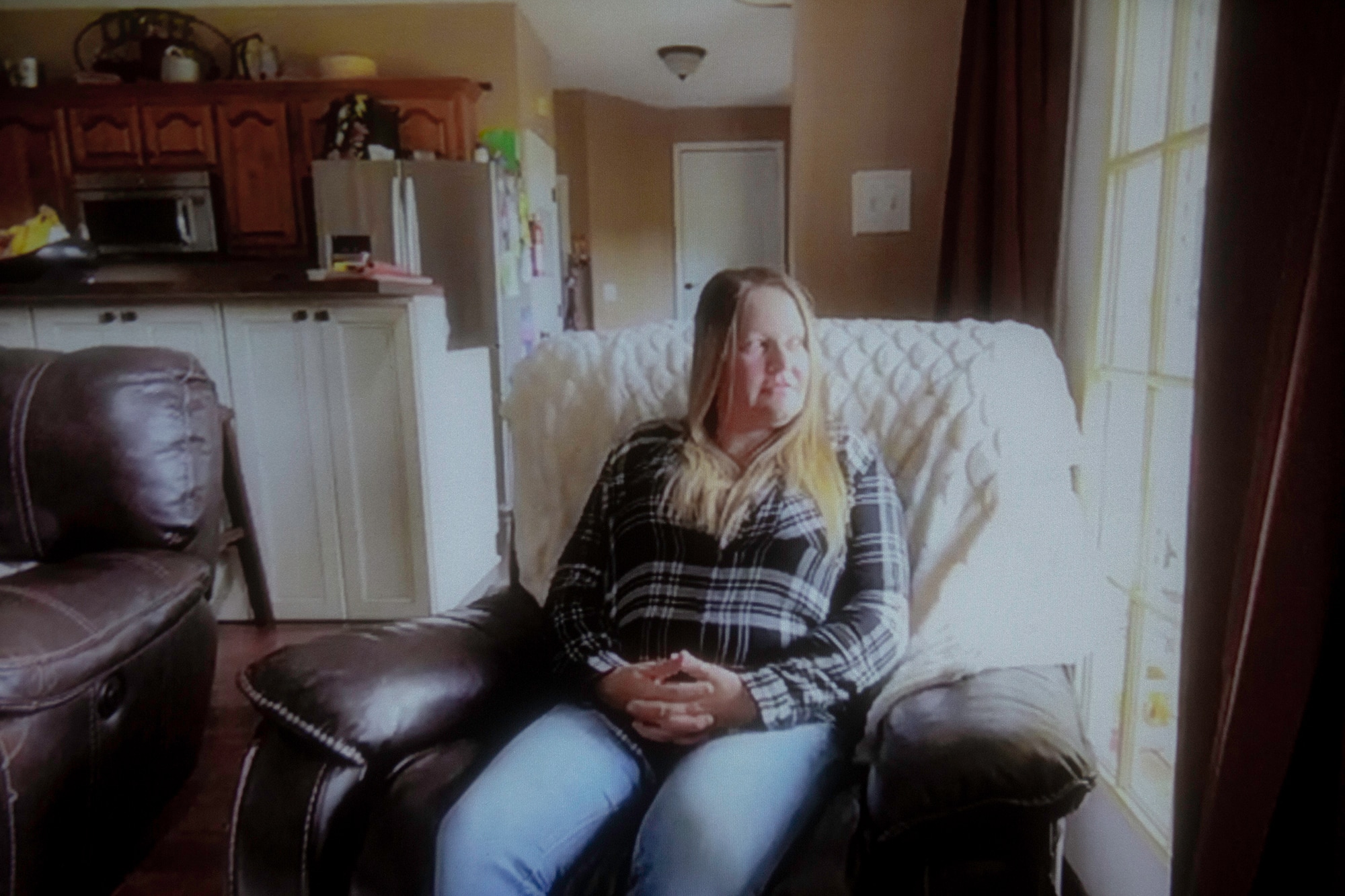
Jesica Llana, pictured in her home in Clarkesville, Tennessee, left the Davidson County Juvenile Detention Center in Nashville after working there four months in 2018. She later sued the detention center's for-profit contract company, Youth Opportunity Investments, alleging staff misconduct. (Portrait taken remotely by James Wooldridge / News21)
Llana worked just four months, earning $12.75 per hour, before quitting. She filed a lawsuit late last year against Youth Opportunity Investments detailing some of the most egregious violations amongst staff and supervisors.
The lawsuit states that Llana reported PREA violations, which refers to sexual misconduct between staff and youth, but continued to witness violations “nearly every shift she worked” even after reporting it.
“It was female staff having relations with the males,” Llana said.
Not included in the lawsuit, Llana told News21, was that guards constantly harassed a boy who identified as LGBTQ.
“They would call him faggot … and tell him they were going to lock him in a room with five of the boys,” she said.
Once, Llana said, she came into work to find a male inmate with blood-soaked towels covering his head.
“He told me that the supervisor did it,” Llana said.
But the abuse wasn’t just physical. Staff frequently waited for kids to use the toilets, which are located in their cells, before bed, then turned off the water, preventing the toilets from flushing and forcing inmates to sleep with the stench of their own excrement, Llana said.
“They thought it was funny,” she said of staff members.
Staff misconduct records are difficult to obtain, and because juveniles are protected by privacy laws, their court documents are closed to the public. News21 contacted 20 states for the number of documented cases of employee misconduct; nine responded with data.
Erin Espinosa, a senior researcher at the National Council for Crime and Delinquency, said facilities often do not see the value of tracking incident reports and other similar data.
“They see those incident reports as accusatory and very much punitive because that’s how they’re treated … you’re talking about a penal system that’s used to being punished,” she said. “They get defensive.”
Espinosa began her work in juvenile justice as a case manager at an all-girls detention facility, later going on to earn her Ph.D. in juvenile justice.
Some states responded to News21 by providing the number of alleged cases, which did not detail whether disciplinary actions were taken; others reported the number of times staff were formally disciplined. Minnesota had the lowest number of employee misconduct incidents, reporting zero cases of physical abuse, and three cases of sexual abuse by staff over the past five years.
Staff and problematic facilities often avoid serious consequences after instances of abuse.
“What happens is usually the facility fires them, or puts them on administrative leave and then fires them before there’s any opportunity (for a scandal),” said Liz Ryan, president and CEO of the Youth First Initiative, an organization promoting alternatives to youth incarceration. “Then it’s over, that’s it. No one ever hears another thing about it and then these people end up working in another institution somewhere.”
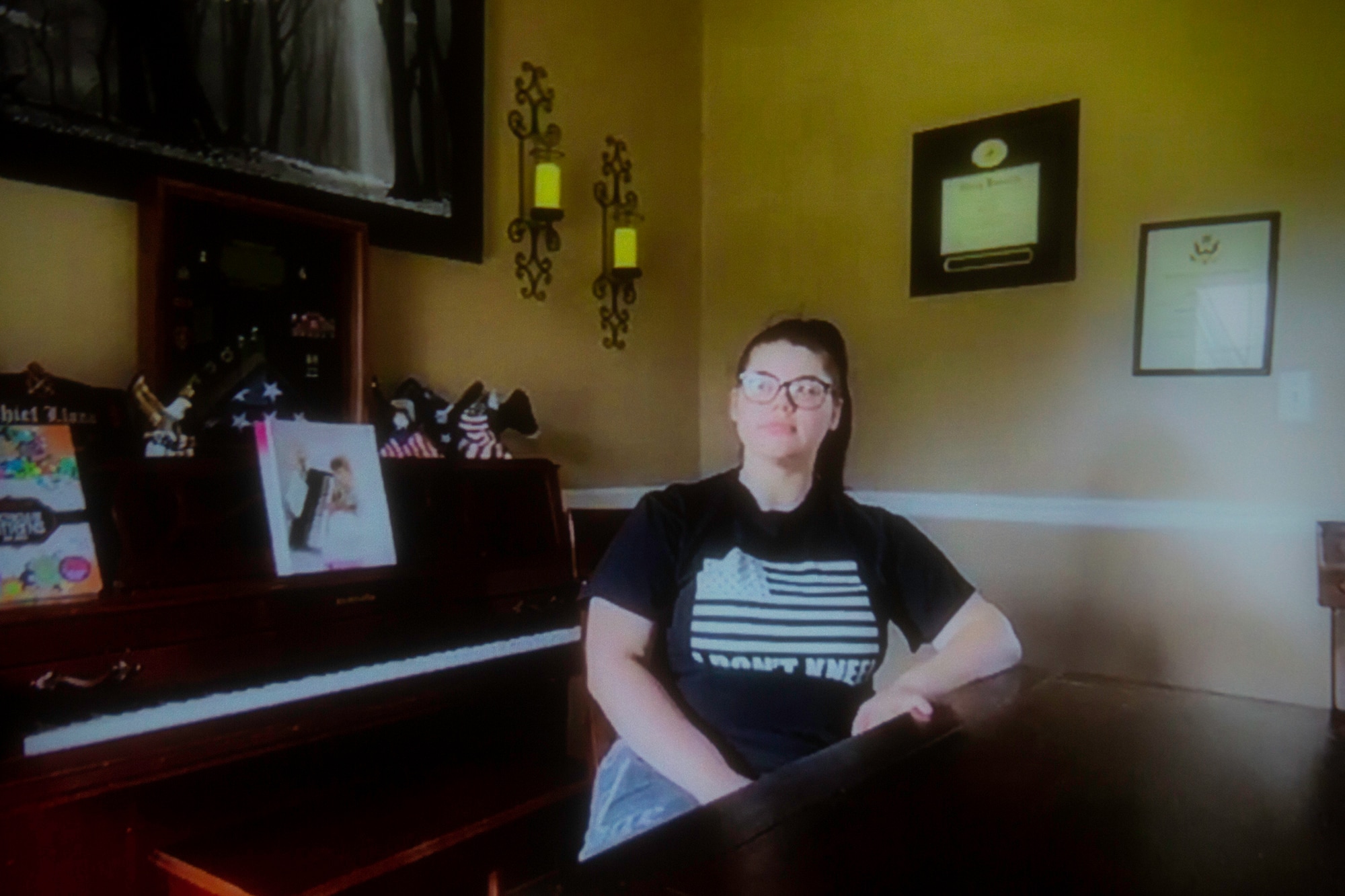
Jazmine Wheeler, pictured in her home in Clarkesville, Tennessee, says staff members at the Davidson County Juvenile Detention Center in Nashville illegally placed her in detention with boys for fighting, telling her, “If you’re going to act like a boy, we’re going to treat you like a boy.” (Portrait taken remotely by James Wooldridge / News21)
Jazmine Wheeler landed at the center where Llana worked run by Youth Opportunity Investments in Davidson County, Tennessee, after a reckless homicide conviction. Wheeler said she reported an employee who verbally abused her when she first arrived, but the woman in charge of processing inmate grievances read them in front of guards and inmates, so everyone knew who had submitted it.
“Nobody wrote grievances because of that,” she said.
Wheeler met Llana during her their time at the detention center. After Llana obtained a license to adopt foster kids in Tennessee, she adopted Wheeler following her release in 2019.
Wheeler said guards placed bets on kids who they thought could beat her in a fight. One day, Wheeler said she and three others got into a brawl. As a result, the guards placed her with the boys for one week – a violation of federal law that bars mixing genders in juvenile detention.
Wheeler said the guards told her, “If you’re going to act like a boy, we’re going to treat you like a boy.”
Mike Dempsey is the executive director of the Council of Juvenile Justice Administrators, a nonprofit created to improve juvenile correctional services by working with facility directors in all 50 states and in some major metropolitan areas.
Dempsey said all states have some type of grievance filing systems available to staff members and detainees, often established by state regulations. However, the quality of these systems depends on those who oversee the detention facilities.
“The process is not standardized, so some systems are better than others,” he said in an email.
Although staff and inmates can file grievances, it’s less certain what, if any, action will result.
Llana’s lawsuit states Youth Opportunity Investments initially told her about the importance of reporting all policy violations she witnessed firsthand or heard from inmates.
Llana said she filed countless complaints against staff, and not without risk. Her colleagues coined the phrase “back the black,” which referred to the black shirts worn by staff. The implication, she said, was that staff should always support one another and not the kids.
“I was labeled as a snitch and I was completely OK with that,” she said.
After reporting a colleague for sexual misconduct, Llana said staff members confronted her, some even threatening to “catch her outside” in the parking lot.
“I was like, ‘OK, well, I guess I’ll see you out there,’” Llana said.
Espinosa found that workers in the facility she worked at in Texas were on a “power trip” when dealing with juveniles.
“There’s no training, you’re assigned roles, we have no idea of each other’s history or past,” Espinosa said. “But now I’m on this side in a uniform, you’re on that side in a uniform and there’s a locked door between us and I’m supposed to control you.”
A job focused on controlling and regulating the actions of not just people but troubled teenagers is “the perfect storm,” she said.
“If you don’t have the skills to actually interact with oppositional hardheaded, some super smart teenagers in a very real way, you shouldn’t be in that work,” Espinosa said. “But that’s not who we recruit, that’s not who we pay for.”
Llana and Espinosa said employees at these facilities often are less educated, have no backgrounds in juvenile justice and are working only for a paycheck.
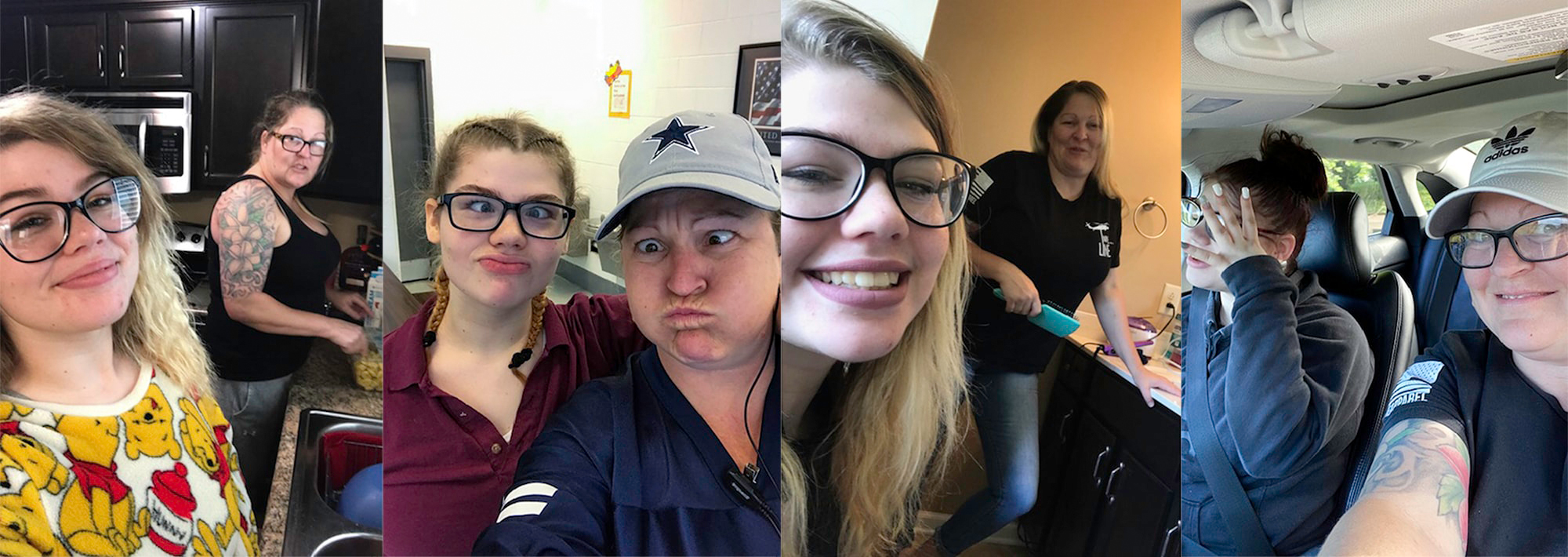
Jesica Llana met Jazmine Wheeler during the four months she worked at Davidson County Juvenile Detention Center. After obtaining a license to care for foster children in Tennessee, Llana adopted Wheeler in 2019. “I call her mom,” Wheeler says. (Photos courtesy of Jesica Llana)
Youth Opportunity Investments is also entangled in lawsuits involving two of the four facilities it runs in Arkansas. This time, it was the incarcerated who came forward.
Abuse in Arkansas juvenile facilities dates back to before YOI was contracted, when in the 1990s, the Arkansas Democrat-Gazette newspaper exposed a pattern of sexual abuse, inhumane restraints, physical violence and leaving youth to sleep outside in freezing weather.
In 2002, conditions in one of the state’s largest facilities were deemed unconstitutional by the U.S. Department of Justice, and in 2013, another report published by the Arkansas Democrat-Gazette exposed more abuse.
In 2014, a facility in Arkansas was ordered to cease the use of a restraint device called the WRAP. Youth were put in a motorcycle helmet covered in duct tape, “made to sit upright, sometimes for hours at a time, with their legs immobilized and arms handcuffed behind their backs in near-total darkness,” according to a report from the Annie E. Casey Foundation in Baltimore.
Now, since Youth Opportunity Investments contracted with the state, new lawsuits have emerged involving the Lewisville Juvenile Treatment Center and the Mansfield Juvenile Treatment Center.
A report in August 2019 from Brooke Digby, the state’s juvenile ombudsman, exposed instances of abuse at Lewisville, including “zip-tying, handcuffing and/or shackling youth and forcing them to sleep that way,” to the point where some inmates had issues walking the next day.
The three-page email to Youth Opportunity Investments President Jim Hill also stated that several youth were given foam cups to urinate in and were denied restroom usage.
“One youth stated he was forced to defecate in his room. He ended up puking due to the smell — he says he was forced to sit in there for over 5 hours,” Digby said in another email regarding Youth Opportunity Investments facilities.
One youth described being dragged by his ankle shackles across campus to the nurses’ station, Brigby stated in an email to the Arkansas Department of Human Services.
Since then, four lawsuits have been filed against the company. Attorney Jeff Priebe represents plaintiffs in three of the cases, each of which claims neglect, battery and liability occurred at Lewisville.
Among the allegations, it claims staff members forced inmates to sleep in shackles and threw them against walls and onto the floor as “disciplinary actions.” One of those suits alleges that a young person left the facility with “anxiety, depression and medical injuries.”
The fourth lawsuit, from a mother of a former inmate suing on behalf of her son, alleges he suffered severe emotional and physical abuse while in Mansfield and Lewisville in June and July 2019.
It references physical and emotional damage, including her son being “zip-tied, along with 17 other juvenile inmates, and left to stay on the concrete floor at least overnight and by some accounts for much longer, some laying in their own urine and feces.”
“They’re sent to these facilities for education, they’re sent for rehabilitation, they’re sent for counseling,” Priebe said. “These types of situations where they’re being injured or being physically restrained just doesn’t help. It’s sad, it’s really sad.”
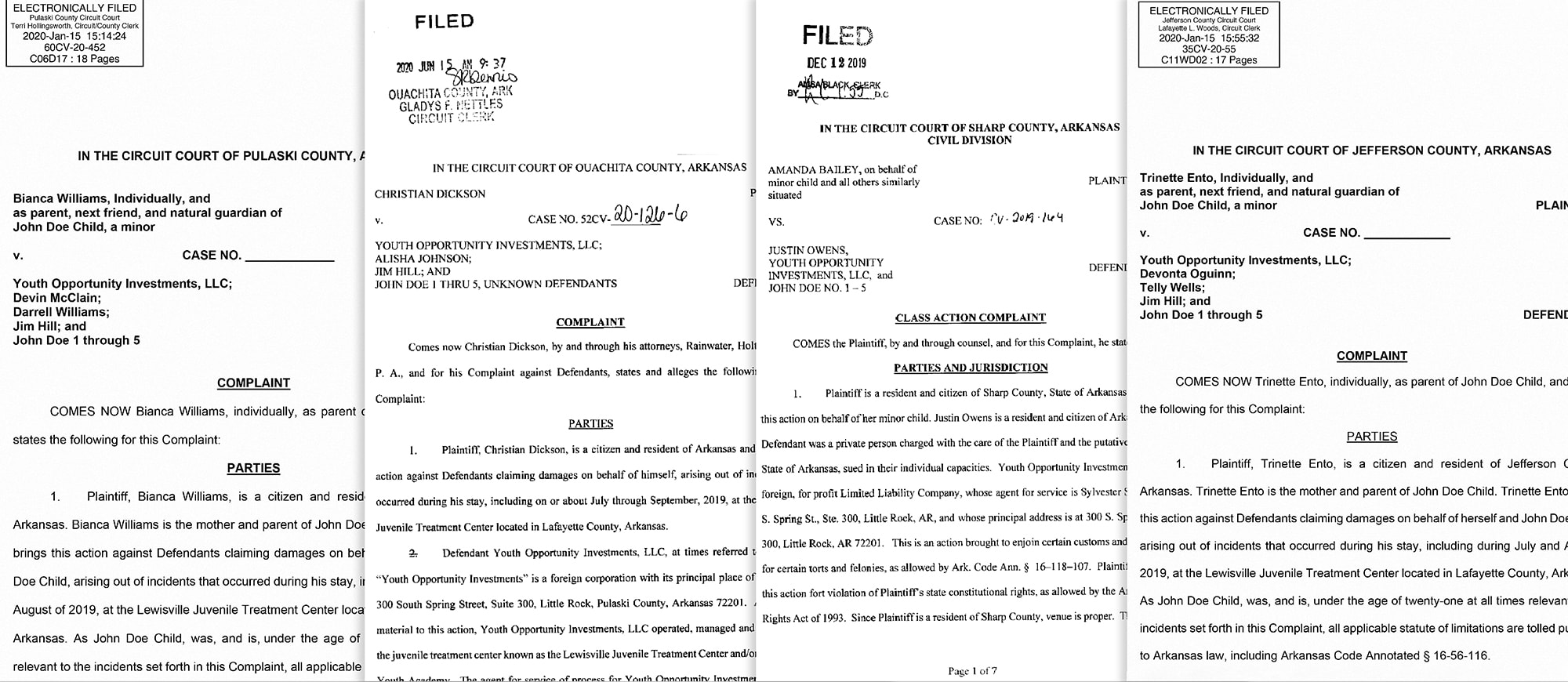
Since 2019, four lawsuits have been filed against Youth Opportunity Investments of Indiana, claiming widespread abuse in its youth detention and rehabilitative services operations.
Contracts with the state earned Youth Opportunity Investments nearly $103 million, according to the lawsuits.
In January, Southwest Arkansas Counseling and Mental Health Center pulled its therapy contract with the company because of a “hostile working environment,” Digby said in an email to Phyllis Bell, a child welfare senior advisor for the governor’s office in Arkansas.
By April, the state Department of Human Services announced that Youth Opportunity Investments would no longer oversee the four facilities it ran, citing “financial concerns.” Arkansas amended its contract for its previous facility contractor, Rite of Passage, to manage all state juvenile treatment centers.
Rite of Passage said it would take over operations of Dermott, Mansfield and Harrisburg, and is considering converting Lewisville into a substance abuse treatment center if funding was available.
But Rite of Passage has its own history of abuse. Colorado’s Department of Human Services in 2018 revoked the license of a Rite of Passage facility, the Robert E. Denier Youth Services Center, citing its failure to provide safe conditions for children, falsified reports and “substantial evidence” that staff abused youth inmates, among other violations.
Despite the lawsuits and confirmed abuse allegations from Digby’s reports, no facilities have been shut down.
Ryan said shutting down facilities is more complicated than simply uncovering instances of abuse. The Youth First Initiative works toward ending youth incarceration.
“When you’re talking about getting rid of a facility, you’re talking about an economic issue and an employment issue,” Ryan said. “Oftentimes, these facilities are the largest employer in that community where they’re based.”
In California, a Rite of Passage employee broke a youth’s wrist at the Ventura Youth Correctional Facility in 2018 and allegedly told her, “Say you’re a bitch,” according to employee records obtained by News21.
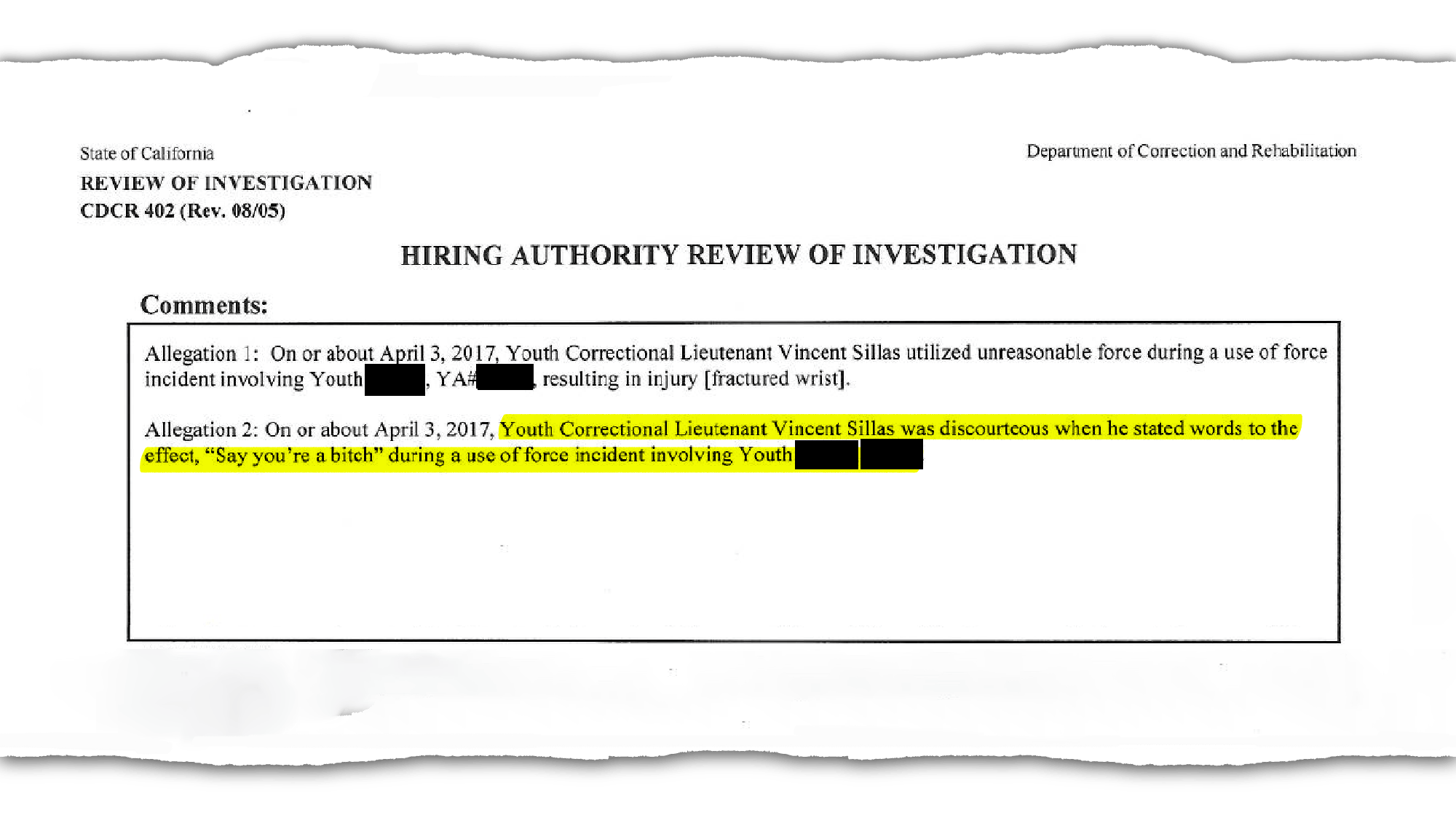
A state investigation in California found an employee of Rite of Passage, a private company that contracts with several states to provide services for juvenile offenders, physically and verbally abused a detainee.
At the North California Correctional Facility, a Rite of Passage employee was fired for lying about using force against a youth who was sent to the emergency room in 2018, according to records News21 obtained from the state.
In 2019, a Georgia mother of a former youth inmate filed a lawsuit against the state after a Rite of Passage staff member broke her son’s arm for allegedly stealing food, records show.
Abraham Ali, 45, took a job as a mental health specialist at a youth detention center in Virginia 21 years ago because he wanted to help young people. He had gone through the juvenile justice system as a boy, so he thought he would understand how they felt.
Over nearly a decade, he worked at three Virginia facilities, he said, and the atmosphere at each was “unacceptable” and traumatic. At times, Ali found himself in physical fights with troubled youngsters.
“I’m dealing with personal shit in my life, I’m just not happy,” he said. “I come to work, and this kid spits in my face … what do I do?”
One of the facilities where Ali worked, North Springs Behavioral Care, was under scrutiny in 2018 after a 15-year-old boy died of asphyxiation from a restraint applied by a staff member.
“I started in my ego judging these kids, justified, feeling like they deserve that they deserve it,” Ali said. “They’re physically attacking me and we physically got to aggressively retaliate back.”
He quit at the age of 32 and now hopes to run an alternative facility someday.
For now, Ali uses Front Line, his art program with a focus on mental health, to assist young people in the Northern Virginia Juvenile Detention Center in Landmark, Virginia.
Some experts believe the solution to reducing abuse lies in better training practices. Dempsey said his group, the Council of Juvenile Justice Administrators, is focusing its training on trauma-informed practices.
“Virtually every system needs to do a much better job of providing training around adolescent development and trauma-informed care,” he said. “The vast majority of kids who are in the system have been exposed to various levels of trauma, and that absolutely plays a role in how they ended up where they are.”
Trauma-informed care also needs to be implemented for staff members, Dempsey said. Detention jobs can be incredibly traumatic, he said, which worsens the environment within the facility.
“If staff aren’t well, if they’re traumatized, then (they’re) responding to behaviors too aggressively or from a fearful perspective,” he said. “Then that situation is creating even more violence.”
Dempsey said there are no universal training requirements to work at a juvenile correctional facility.
Ali said most staff members were trained on de-escalation, but such techniques were not implemented often enough.
“There’s a way to physically de-escalate a situation without hurting or killing someone, and we’re taught how to do it,” he said. “But it takes a certain degree of compassion to be able to carry into practice what you’re taught.”
Ryan, from Youth Justice Initiative, hopes to eventually end the need for correctional facilities at all. She said that often the largest single chunk of state’s juvenile justice agency budgets goes toward running these facilities.
“Nowhere else in no other kind of social service field do we invest the greatest amount of resources in a strategy that produces the worst outcomes,” Ryan said.
Franco LaTona is the Don Bolles/Arizona Republic fellow.
Our content is Creative Commons licensed. If you want to republish this story, download a zip file of the text and images.